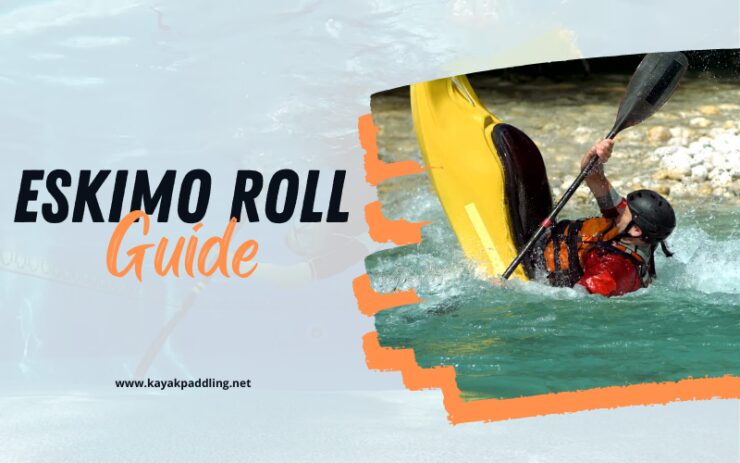At some point, every kayaker is bound to tip over, perhaps even when they’re just starting out. Accidents can occur, and even those who navigate the seas in their kayaks aren’t immune to capsizing. Tipping over in a kayak is a common occurrence and is often seen as part of the thrill. However, there are moments when being capsized could turn into a dangerous situation. That’s why it’s crucial for every kayaker to know how to right their vessel and regain control.
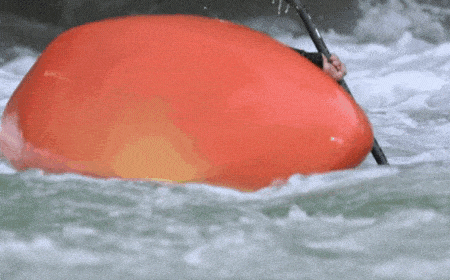
The Eskimo roll stands out as the most dependable and safest technique to recover after your kayak capsizes. This method spares you the hassle and time, as there’s no need to exit your kayak in icy waters and deal with removing copious amounts of water before re-entering.
There are multiple ways to master the Eskimo roll, with different trainers offering their unique spins on the technique. The method you choose may come down to simplicity and personal preference. In this article, we’ll delve into the most favored approaches to perfecting the Eskimo roll.
Here are some essential aspects of the Eskimo roll:
Table of Contents
ToggleStarting out
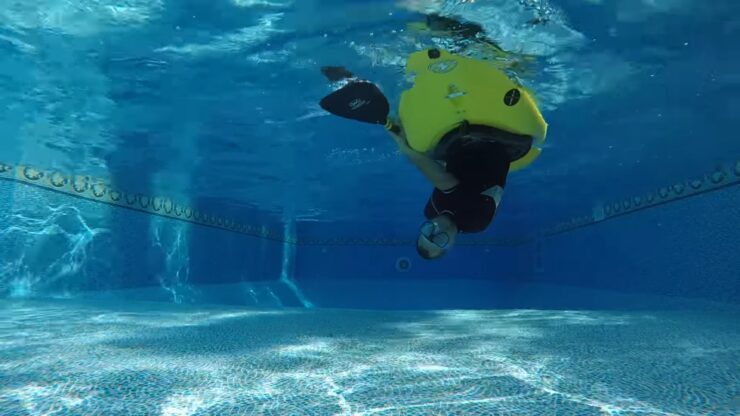
Preparing to roll out is crucial not just during the practice but also in normal kayaking. It can assist you in rolling easily and swiftly. The first thing to do is take your body forward and then toward the deck on the kayak.
This will make sure that you don’t smash your face against any rocks. your knees are touching the deck, and your heels are pressed against the bottom. This will stop you from falling out of the kayak in the course of rolling.
Sweeping
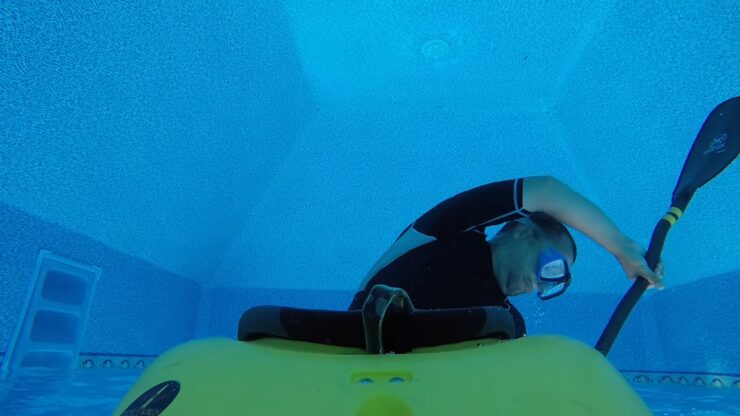
When you have set up your roll’s position and swung it, slightly lean to the left, and you’ll end up capsizing. When you’re upside down and submerged, do not lose your composure and control. It is vital to keep your cool because panicking is the primary reason that many Eskimo Rolls are unsuccessful. The more you lean forward, the more you move your head towards the deck. Once you’re sure your paddle is as high as it is possible to go then turn it over until it is perpendicular with the watercraft.
The top arm should be extended to the top of the kayak as high as you are able to. The bottom arm should extend to the maximum extent it is. This is now at the center of your Eskimo Roll. You can do the roll now. The fundamental idea behind recovery is to push the paddle along the surface of the water. Always make sure that the vessel is straight.
Keep your head and upper body near the surface, however, do not lift them off the water. This will provide enough support for first getting the kayak upright and later getting your upper body off the surface. The upper part of your body can be strong. make use of it to stroke.
Hip Rotation (a.k.a. Hip Snap)
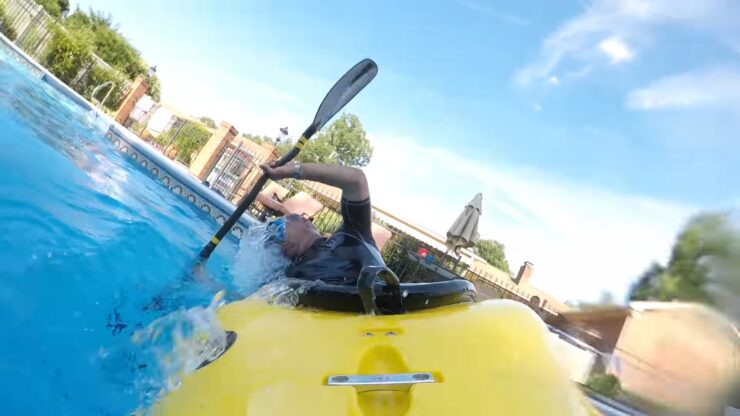
When the boat has almost been straight, you need to place your upper body onto the top of your kayak. In contrast to the way you think, the power to flip the kayak over is controlled by your hips. Keep your head low and rest on the shoulders on your outside arm.
As you press against the water’s surface Utilize your knees and hips to move the kayak up by the strength that you pull. Start by snapping your hips. to push the kayak back over, pressing the blade of your paddle on the water’s surface. While you turn, keep your shoulders and head in the sea for the longest time is possible. The hip snap acts as the driving factor in this Eskimo Roll.
Don’t let your head go first
Avoid the urge to get your head from the water too early by putting your ear on your shoulder. Your head is the final piece of you to be lifted out of the water. If you lift your shoulders and head out of the water too soon it could snuff out the momentum of your roll.
Getting back
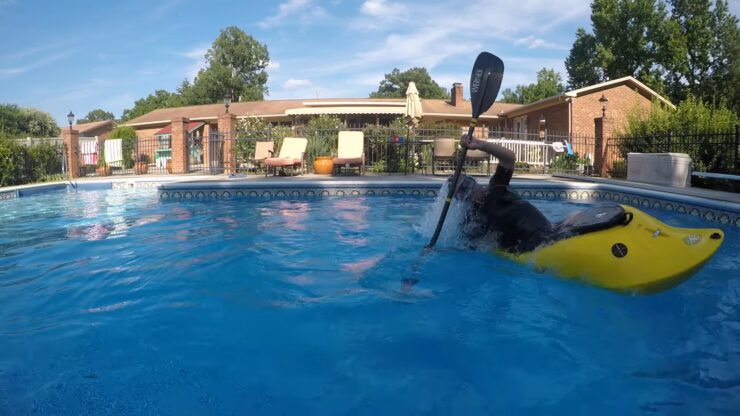
As you rise out of your roll, turn your knuckles toward the rear of the wrist. This will allow you to brace your body against water using your paddle as you get back your balance. Get yourself back up and try to find your balance. Reposition your body weight to the side to level out.
Tips & Tricks for a Flawless Roll
Merely knowing the steps isn’t enough. Perfecting the roll requires understanding the finer nuances that can make or break your execution.
Mastering the Hip Snap
The hip snap is the heart of the Eskimo roll. Getting this right is half the battle won.
- Practice without the Paddle: Initially, use your hands instead of the paddle. This focuses your attention solely on the hip movement.
- Use a Buddy: A friend can hold your shoulders, helping you right the kayak as you practice the hip snap.
Troubleshooting Common Mistakes
Everyone fumbles initially. Here are some pitfalls to avoid and how to rectify them.
- Rushing the Process: Remember, haste makes waste. If you try to rush the roll, you’re more likely to mess it up. Take it slow and steady.
- Improper Blade Angle: Ensure your paddle isn’t diving deep into the water. It should skim the surface.
Practice Strategies
Mastering the Eskimo roll is a journey. But with dedication, even the most challenging obstacles can be surmounted.
Practicing in Safe Environments
Starting in a swimming pool or calm lake is ideal. The controlled environment helps you focus on technique without external challenges.
- Low Risk: There’s less at stake. If something goes wrong, you’re in a safe space.
- Gradual Progression: As you gain confidence, move to more challenging waters.
Consistency is Key
Like any skill, the more you practice, the better you become. Make rolling a consistent part of your kayaking regimen.
- Daily Drills: Dedicate a few minutes each day to practice. Over time, it’ll become second nature.
- Challenge Yourself: Try rolling in different conditions, broadening your experience and enhancing your adaptability.
FAQs
What is the main purpose of learning the Eskimo roll?
The main purpose of learning the Eskimo roll is to provide kayakers with a method to right themselves after capsizing without having to exit their kayak.
This technique is especially valuable in cold water environments where prolonged exposure can lead to hypothermia.
Do I need any specific equipment or kayak design to execute an Eskimo roll effectively?
While the Eskimo roll can be performed in most kayaks, some designs are easier to roll than others. Whitewater kayaks, for instance, are typically more maneuverable and easier to roll compared to some recreational kayaks.
Additionally, a snug-fitting sprayskirt and cockpit can aid in performing the roll as they help keep water out and provide better contact with the kayak.
How long does it typically take for someone to master the Eskimo roll?
The time it takes to master the Eskimo roll varies greatly from individual to individual. Some people might pick it up in a single afternoon, while others might need multiple sessions over several weeks. Consistent practice, proper instruction, and patience are key.
Is it safe to practice the Eskimo roll alone?
No, it is always recommended to practice the Eskimo roll with a buddy or under the supervision of an experienced instructor. Having someone nearby can ensure safety in case of difficulties or panic while underwater.
Are there any physical prerequisites to performing the Eskimo roll?
While the Eskimo roll is largely about technique, having core strength and flexibility can be advantageous. However, with proper training and practice, most people, regardless of their physical condition, can learn to execute the roll.
How can I maintain calm when I’m upside down in the water?
Staying calm underwater comes with practice. Start by practicing capsizing in a controlled environment, like a pool, to get used to the sensation.
Over time, as you become more comfortable being upside down and holding your breath, it’ll become easier to remain calm and execute the roll. Breathing exercises and visualization techniques can also be beneficial.
Final Words
If you’re not sure that you’re capable of rolling, you’re not able to. Like other aspects of kayaking confidence in yourself is an important thing. When we start to doubt our abilities underwater then the reality of the situation comes into play in the form of “I’m stuck underwater, hurtling down a river out of control”. The normal reaction is to get scared, and either leave immediately or try an incredibly difficult role that is not likely to succeed.
To roll with confidence, you have to stay calm and believe in yourself and be focused on a technique. If you are able to concentrate on making the roll fashionable and don’t quit after the first attempt The results will be evident.
Before you go, watch the following video for more instruction on how to do an eskimo roll:
Adelaide Gentry, a seasoned kayaking enthusiast and expert, is the driving force behind KayakPaddling.net. With over a decade of experience navigating the world’s most challenging waterways, Adelaide combines her passion for adventure with a deep knowledge of kayaking to provide insightful and practical guidance for paddlers of all levels.
Related Posts:
- Heavy Duty Fishing: 11 Best Rods And Reels For Big Fish 2025
- 16 Best Kayak For Beginners 2025 - Kayaking Adventure Gear
- 10 Best Inflatable Kayak 2025 - Rivers, Lakes & Open Seas
- 10 Best Saltwater Fishing Boats - Ultimate Angling Adventure
- 12 Best Kayak GPS 2025 - Find Your Way to Adventure
- 12 Best Fishing Lures Ever 2025 - Baits That…

